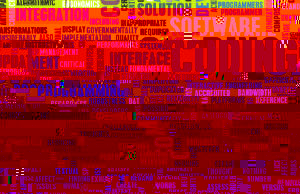E-discovery Technology Trends For Lawyers
E-discovery has been a boon to legal offices across the nation as the legal field embraced the realities of conducting litigation in a technologically driven world. Typical growing pains aside, e-discovery has opened the door for a more cost effective way to manage records, documents, and discovery in legal cases. Owing to the procedural nature of legal work, 2014 is witnessing trends that have continued from previous years as the industry adapts to government regulations, and looks to the challenges of conducting cross-border e-discovery in a global economy. Also trending, the first half of 2014 notes a scramble to contain costs associated with the e-discovery phase of litigation.
Top Ten Trends in E-Discovery for 2014
1. Finding the needle in the haystack—even the most straightforward cases can lead to an avalanche of unexpected data, documents, and files. Parsing through them becomes a prohibitive expense for everyone involved in the process. Predictive coding has been the industry’s answer to solving the “finding the needle in the haystack” problem.
2. Dramatically increased data volumes—it turns out that this technology thing is not a trend. Indeed, if possible, the use of technology driven communication has only increased in the past twelve months, and managing that information flow has garnered the attention of industry experts.
3. Cloud-based hosting—new e-discovery software has moved the process to the Cloud. The move avoids having to make the capital investment in hardware, software, infrastructure, and support staff to maintain the system. Read our blog about cloud computing here.
4. Evolution of business communication—While email remains the most popular form of business communications, the explosion of text and instant messaging across a broad spectrum of mobile devices has occasioned a regulatory look at how new rules should govern the collection of data.
5. Riley v. California—Supreme Court watchers are waiting to see what impact The Nine’s decision in Riley v. California will have on the process of e-discovery in civil litigation. In that landmark case, the court ruled that law enforcement officers, under Fourth Amendment protections, would need to secure a warrant prior to reviewing information stored on a Smartphone.
6. Managing the Information—information governance, and defining the defensible deletion of unnecessary data, is one of the hottest trends of this year. The debate, begun last year, has picked up steam with a focus on the use of new technology to manage the data flow.
7. Federal Rule Adjustments—the Committee on Rules of Practice and Procedure of the Judicial Conference is expected to weigh in this year on proposed amendments to Rule 37 (e) as it relates to e-discovery matters.
8. Using predictive tools prior to collection—as mentioned, the growth in data had spurred the growth of predictive technologies designed to help sort out the data, however, this tool has typically been applied after the collection processes has been completed. To help curb processing costs, firms are looking at ways of funneling the data before incurring any processing costs.
9. Litigating in the European Union—EU privacy concerns are causing consternation in United States legal offices that do business in Europe. The EU’s governing body is looking at strict new privacy rules that could greatly complicate the e-discovery process overseas.
An Ongoing Trend
10. The Attorney with an IT hat—an ongoing trend that is expected to continue throughout 2014 is the realization that the modern attorney needs to be equally prepared to doff his barrister hat, and don his IT hat in order to successfully manage the data flow that comes across his/her desk.




Leave a Reply
Want to join the discussion?Feel free to contribute!